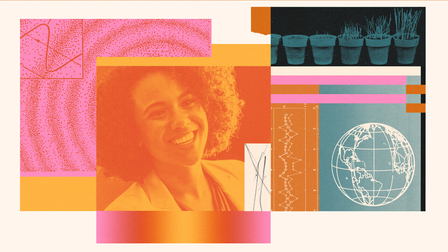What’s the difference between cohort-based learning and traditional e-learning?
Jun 03, 2022

Goldfish have gotten a bad reputation. A popular theory, used here by Microsoft, claims that this supposedly scatterbrained fish only has an attention span of nine seconds. Despite this widely-spread misinformation, fish have the same capacity to learn as mammals and birds. In fact, they’ve been used as a model for the process of learning and memory formation since as early as 1908.
But why are we talking about goldfish? Attention is an important aspect of learning, but it's often overlooked in learning design, especially when it comes to traditional e-learning. With an average completion rate of three percent, it’s clear that MOOCs, for example, don’t hold learner attention long enough to see results. And many click-next e-learning solutions do little to capture and sustain learner attention, particularly because they do not capitalize on what research has shown to be one of the best ways to both spur engagement and deepen learning: social interaction.
That’s why Nomadic uses cohort-based learning to keep learners engaged and drive real transformation in organizations around the globe. Cohort-based learning is a model of collaborative learning where a set group of learners moves through a sequence of interactive content together, discussing and sharing their ideas along the way. However, there is still some confusion in the marketplace about the way it differs from traditional e-learning solutions.
There are several key advantages digital cohort-based learning offers over typical e-learning.
Cohort-based learning is more collaborative.
Nobel Prize winner and physics professor Carl Weiman made an important discovery about learning when he noticed his graduate students were much more engaged in their work than during their undergraduate years. He realized that peer interactions increase learner engagement even more than having the most talented star instructor.
We see this in our Academy as well, where learners participate in community discussions to earn points for their teams and climb the leaderboard. It's in these discussions that learners make the connection between the material and their day-to-day work, applying insights to the problems they encounter as they carry out their daily tasks and collaborate with colleagues.
Cohort-based learning is better for global teams.
We’re all familiar with learning in a classroom. We learned the same material at the same time as our classmates. We call this synchronous learning.
In contrast, self-paced e-learning courses are examples of asynchronous learning. Learners complete these modules on their own time and at their own pace. There are no deadlines to meet, and the information in these courses is readily available 24/7, 365 days a year. Many working professionals like that the courses allow them to pause their learning and prioritize work and life commitments. However, without deadlines or time constraints in place, asynchronous learning fails to hold learners accountable for finishing their coursework. It can also be lonely and demotivating.
That’s why we use semi-synchronous learning with our cohort-based Programs. This mode of learning allows learners to complete each Program at their own pace, but within the same timeframe as their fellow members. Apps like Slack and WhatsApp are perfect examples of semi-synchronous communication. Social media apps are too!
Follow any influencers on Instagram? Chances are you didn’t see their most recent post right away (unless you’re a huge fan). You probably found it while scrolling through your phone before bed. You “like” the post and even comment sharing your ideas about the content. At this point, the post is hours old, but because of the semi-synchronous nature of the app, you can still engage with the community despite being time zones apart.
For global teams, semi-synchronous learning makes it so that different time zones are no longer a barrier to entry for company-wide L&D. In fact, it promotes equity in the workplace by giving non-native language learners more time to comprehend and respond to the material in their non-native language.
Cohort-based learning is more impactful and engaging.
Can your team innovate, collaborate, and problem-solve faster and more efficiently than your competitors? This is what our economy competes on today. It's also why the socially collaborative nature of cohort-based learning makes it the best way to teach these highly social skills. We see the impact of cohort-based learning not only in the numbers (86% of learners complete Nomadic cohort Programs), but also in business impact and strategic goals met.
In one example, AB InBev won Creative Marketer of the Year after working with Nomadic to build a capability academy for their global team of over 2,000 marketers spread out across 40 countries. By using Nomadic’s cohort-based Academy, their team was able to learn and build skills together in the flow of their work, without major time zone or logistical hassles. Ryan Verschoor, AB InBev’s head of marketing capability, described it like this: “The proof has been in the pudding in seeing the amount of engagement, with people interacting with their peers, arguing, discussion, debating, provoking.”
Bottom line: "cohorts are king"
E-learning has been around for a while now. Most of us have had plenty of digital learning experiences at this point, some better than others. But for organizations looking to keep employees actively engaged in their learning, scale premium learning across globally distributed teams, and help their teams gain today's much-needed collaborative skills, there’s a reason––as Wes Kao of Maven proclaimed––“cohorts are king.”
*
To learn more about our cohort-based learning model, read our in-depth report, Cohort-Based Learning at Scale: Eight Principles for Success. You can also get in touch to discover how cohort-based learning can help your organization.
Sign up to get the latest expert commentary, analysis, and news in learning and leadership delivered straight to your inbox.



